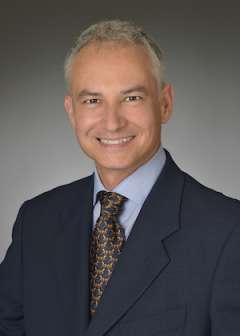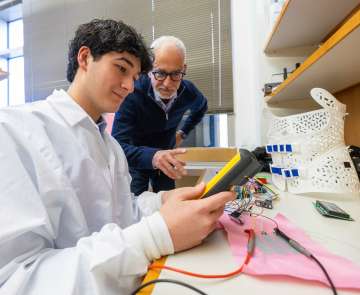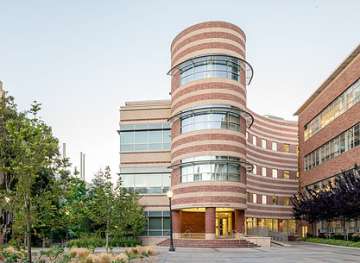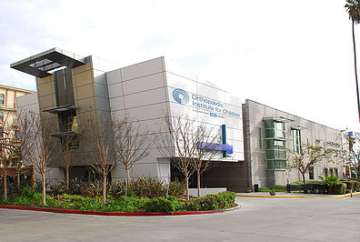Our History
Fabrizio Billi, MD

I have a broad background in material science, with specific training and expertise in biomaterial characterization, degradation and tissue integration, tribology and biomechanics, and non-destructive testing. As a research scientist at the Joint Research Center of the European Commission, Institute for Advanced Materials, I worked on the application of acoustic emission to composite materials for aerospace components, ceramic materials for adiabatic engines, oxides for high temperature applications, engine wear, and hip wear simulators. I also have a Level III Certification in Acoustic Emission Technology. My research in the Department of Orthopaedic Surgery at UCLA, and in The Harry McKellop, PhD Research Center for Orthopaedic Biology, Biomaterials, Biomechanics, Tribology, and Wearable Technologies I am directing, includes collaboration with materials engineers, tribologists, biologists, and clinicians. I have developed a strong understanding of the problematic related to natural and artificial joints, including cell and bone biology, and immunology. It is my intention to bring/integrate sensor monitoring into the clinical setting in order to help surgeons formulate more precise diagnosis and patients live a longer productive life. In the past, the program has been supported by funding from a number of industry sponsored and foundation grants. Recently, NIH/ NIAMS has awarded us an R43 grant to study the application of acoustic emission to monitor artificial knee prosthesis, and an R21 grant to monitor soft joint tissue joint degradation. The combination of my background knowledge, my hands-on expertise and my ability to manage research projects will serve well in the successful performance of the proposed studies. The team behind this proposed study is strong and has demonstrated successful interaction and cooperation.
Contribution to Science
My early publications directly related to the study the behavior of ceramic and composites materials via non-destructive testing. These publications demonstrated that acoustic emission could be successfully employed to predict crack formation and failure in these materials.

Application of acoustic emission to composite materials, demonstrated how the technology could be successfully employed to distinguish failure of matrix and reinforcement and laid the ground to extend its use in monitoring health status of composite parts in aeronautics, automotive, and construction industries. Furthermore, the publications relative to zirconia partially stabilized with yttria documented how acoustic emission was able to detect crystal phase changes due to the application of external loads even at level of stresses well below those that were taught to be necessary to induce such a transformation. These allowed to perfect zirconia sinterization that eventually led to applications in the orthopaedic field. Following these studies I extended the use of acoustic emission to natural composites, more specifically bone, and in monitoring mechanical failure and wear in dental and orthopaedic implants.
In addition to the contributions described above I developed two wear simulators one for fretting studies in orthopedics and one for testing artificial intervertebral spine disc. The studies that followed showed how fretting wear was contributing substantially to the overall wear produced by artificial knees. The spine wear simulator was among the very first spine simulator developed in the field. The publications showed the severe wear that artificial disc were subjected during normal activity. Furthermore, the publication served as a guide to developed current ASTM standard.
Following the studies on wear and tribology, with a team of collaborators, I developed protocols to isolate wear debris generated by artificial joints. The publications showed characteristics nanometer-sized debris that could not be previously identified. These protocols were recognized with The John Charnley Award from The Hip Society. More recently I have been involved in the characterization of the efficacy of antimicrobial implant coatings.
Orthopedic Research Hospital Center (OHRC)
In 2007, The UCLA/Orthopaedic Hospital Department of Orthopaedic Surgery opened the Cesar Pelli-designed, state-of-the-art 35,000 square foot Orthopaedic Hospital Research Center in the heart of the Court of the Sciences on the UCLA Westwood campus.

The addition of the OHRC catapulted the UCLA/Orthopaedic Hospital Department of Orthopaedic research space to more than 48,000 square feet, tops in the United States among other departments of orthopaedic surgery. In addition to amplifying traditional research strengths in biomechanics, materials science, and cartilage biology, new areas of research were activated 1) stem cell and developmental biology, 2) molecular endocrinology and genetics, 3) tissue engineering and nanotechnology science and 4) patient-oriented clinical research designed to move discoveries made at the bench in the laboratory quickly but safely into the realm of clinical medicine.
Scientists and clinicians work together in close proximity, stimulating the cross-fertilization of theories, knowledge, and experience that generates valuable new ideas and therapies, moving breakthroughs from bench to bedside quickly and safely. The alliance between UCLA and OIC creates a platform for unparalleled contributions to patient care and scientific discovery in orthopaedic surgery and musculoskeletal medicine.
Luskin Orthopaedic Institute for Children (OIC)

For more than a century, the Orthopaedic Institute for Children has provided unparalleled care for patients with musculoskeletal disorders regardless of their family’s ability to pay. We are doctors, surgeons, nurses, researchers, administrators and volunteers committed to helping children lead healthy, active lives.
In 1998, Orthopaedic Institute for Children (OIC) and UCLA, forged a far-reaching alliance to broaden the scope of both organizations – bringing new and expanded programs for patient care, research and education in musculoskeletal disorders to Los Angeles and beyond. While Santa Monica-UCLA Medical Center and OIC may be the most visible component of the alliance with UCLA, this partnership has provided enhanced opportunities for research and education.